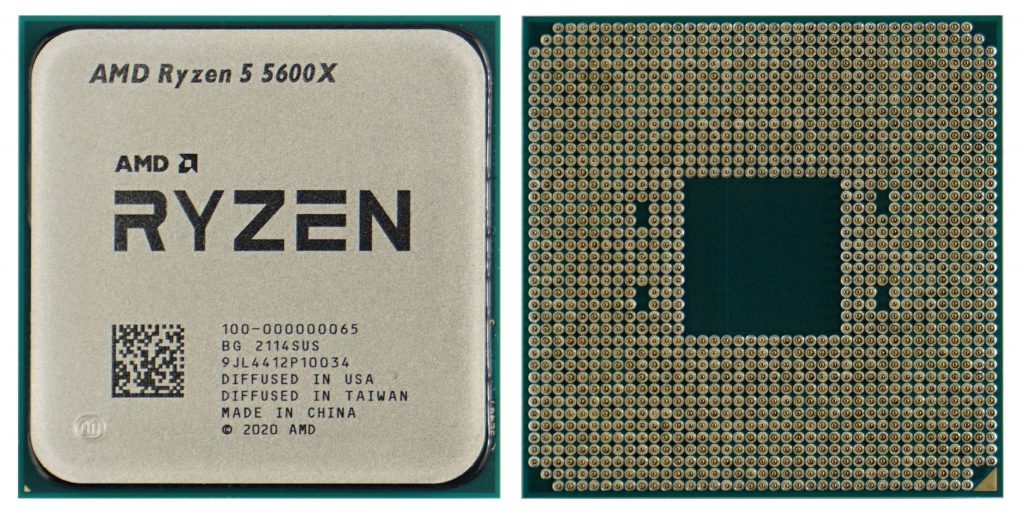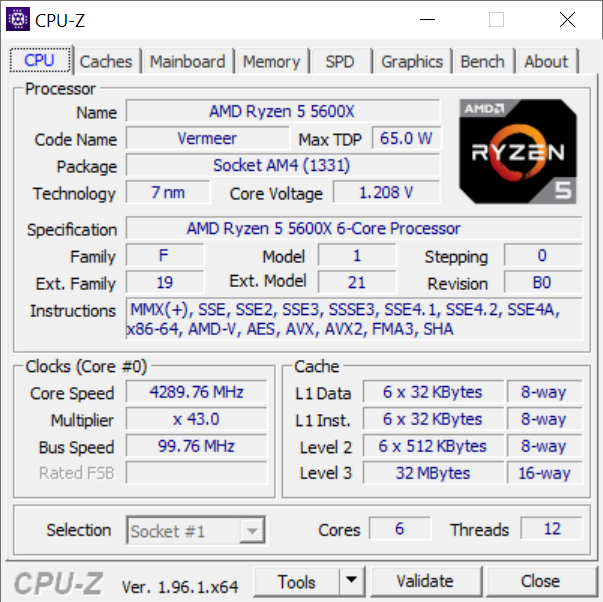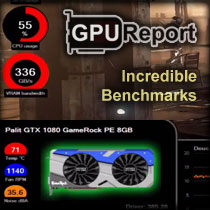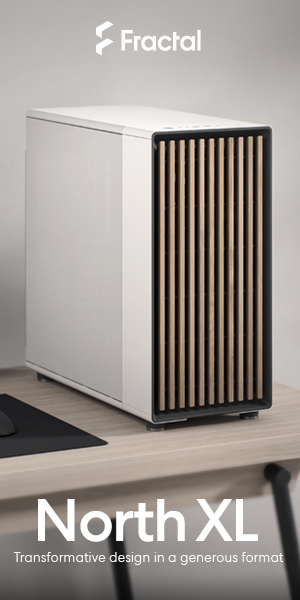AMD Ryzen 5 5600X in detail
We’ve already discussed the middle class Intel processors (Core i5) in tests, but so far without comparing it to the equivalent Ryzen 5. We will gradually add these, but before the R5 3600, do not miss the extensive comparison of R5 5600X to Ci5-11400F. It’s a bit of an unequal fight, as the AMD piece is significantly more expensive, but maybe in your eyes it will defend its price in tasks where it is clearly better than the Core i5 Rocket Lake.
The Ryzen 5 5600X is still the cheapest processor from the Vermeer family, i.e. from the current generation of Ryzen 5000 processors without an integrated graphics core. Although the APU Ryzen 5 5600G (Cezanne) was released recently at a slightly lower price, there may be no question of any alternative. This processor is aimed at a slightly different customer and will not be so advantageous in setups with graphics cards.
AMD is very careful not to compete with its own processors. With the Ryzen 5600X, this is a similar situation as with 8-core processors, of which AMD does not offer any cheaper, lower-clock retail variants. And with great sales of the R5 5600X and limited production capacity, it’s hard to expect a cheaper, lower-clocked non-X model, or something like R5 5500. The Ryzen 5 5600X is doing too well on the market for AMD to risk anything. But maybe I’m wrong and in the end, some cheaper derivative will be released, which will approach the price of the Core i5-11400F. Thus, the price difference corresponds almost to the amount for which the Core i5-10400F is sold.
The 5600X is far from being such a cheap processor as the Ryzen 5 3600, which also got a bit more expensive, but the 5600X is still about a hundred euros pricier and the difference in price is even higher compared to the Ci5-11400F. And yet it is still a hexa-core processor with 12 threads. It is likely true that AMD bets on its Zen 3 architecture for having brought a significant performance improvement over Zen 2, and Rocket Lake is also slower and less efficient, but it is also in another price category, still suitable for low-budget setups. In the tests, we will try to find answers to why a significant surcharge for Ryzen 5 5600X can be justified.
The most attractive comparison will probably be with the Core i5 11400F, which also has 6 cores and no iGPU (although the Ci5-11600K is closer to the R5 5600X in terms of price). The TDP of both processors is 65 W, although the PL2 (154 W) on the Core i5 is set quite more aggressively than the PPT (88 W) on Ryzen 5. What is common is PCI Express 4.0 bus support and added value in the form of a bundled cooler (the R5 comes with Wraith Stealth).
Compared to Ryzen 9, the Ryzen 5 5600X, just like Ryzen 7, has only one 7 nm chiplet (CCD) on the PCB with an area of 80.7 mm². Next to it is another larger 12 nm cIOD chip with 125 mm². It also contains an Infinity Fabric memory controller. Both chips are apparently soldered to the processor’s heat spreader, and the material used is apparently indium-based.
| Manufacturer | AMD | Intel | |
| Line | Ryzen 5 | Core i5 | |
| SKU | 5600X | 10400F | |
| Codename | Vermeer | Comet Lake | |
| CPU microarchitecture | Zen 3 | Skylake | |
| Manufacturing node | 7 nm + 12 nm | 14 nm | |
| Socket | AM4 | LGA 1200 | |
| Launch date | 06/21/ 2020 | 05/20/2020 | |
| Launch price | 299 USD | 157 USD | |
| Core count | 6 | 6 | |
| Thread count | 12 | 12 | |
| Base frequency | 3.7 GHz | 2.9 GHz | |
| Max. Boost (1 core) | 4.6 GHz (4.65 GHz unofficially) | 4.3 GHz | |
| Max. boost (all-core) | N/A | 4.0 GHz | |
| Typ boostu | PB 2.0 | TB 2.0 | |
| L1i cache | 32 kB/core | 32 kB/core | |
| L1d cache | 32 kB/core | 32 kB/core | |
| L2 cache | 512 kB/core | 256 kB/core | |
| L3 cache | 1× 32 MB | 1× 12 MB | |
| TDP | 65 W | 65 W | |
| Max. power draw during boost | 88 W (PPT) | 134 W (PL2) | |
| Overclocking support | Yes | No | |
| Memory (RAM) support | DDR4-3200 | DDR4-2666 | |
| Memory channel count | 2× 64 bit | 2× 64 bit | |
| RAM bandwidth | 51.2 GB/s | 42.7 GB/s | |
| ECC RAM support | Yes but unofficial | Yes | |
| PCI Express support | 4.0 | 3.0 | |
| PCI Express lanes | ×16 + ×4 | ×16 | |
| Chipset downlink | PCIe 4.0 ×4 | DMI 3.0 ×4 | |
| Chipset downlink bandwidth | 8.0 GB/s duplex | 4.0 GB/s duplex | |
| BCLK | 100 MHz | 100 MHz | |
| Die size | 1× 80.7 mm² + 125 mm² | 149.6 mm² | |
| Transistor count | 4.15 + 2.09 bn. | ? bn. | |
| TIM used under IHS | Solder | Solder or paste (depends on version) | |
| Boxed cooler in package | AMD Wraith Stealth | top-flow with aluminium core | |
| Instruction set extensions | SSE4.2, AVX2, FMA, SHA, VAES | SSE4.2, AVX2, FMA, SGX | |
| Virtualization | AMD-V, IOMMU, NPT | VT-x, VT-d, EPT | |
| Integrated GPU | N/A | N/A | |
| GPU architecture | – | – | |
| GPU: shader count | – | – | |
| GPU: TMU count | – | – | |
| GPU: ROP count | – | – | |
| GPU frequency | – | – | |
| Display outputs | – | – | |
| Max. resolution | – | – | |
| HW video decode | – | – | |
| HW video encode | – | – |
- Contents
- AMD Ryzen 5 5600X in detail
- Methodology: performance tests
- Methodology: how we measure power draw
- Methodology: temperature and clock speed tests
- Test setup
- 3DMark
- Assassin’s Creed: Valhalla
- Borderlands 3
- Counter-Strike: GO
- Cyberpunk 2077
- DOOM Eternal
- F1 2020
- Metro Exodus
- Microsoft Flight Simulator
- Shadow of the Tomb Raider
- Total War Saga: Troy
- Overall gaming performance
- Gaming performance per euro
- PCMark and Geekbench
- Web performance
- 3D rendering: Cinebench, Blender, ...
- Video 1/2: Adobe Premiere Pro
- Video 2/2: DaVinci Resolve Studio
- Graphic effects: Adobe After Effects
- Video encoding
- Audio encoding
- Broadcasting (OBS and Xsplit)
- Photos 1/2: Adobe Photoshop and Lightroom
- Photos 2/2: Affinity Photo, Topaz Labs AI apps, ZPS X, ...
- (De)compression
- (De)cryption
- Numerical computing
- Simulations
- Memory and cache tests
- Processor power draw trend
- Average processor power draw
- Performance per watt
- Achieved CPU clock speed
- CPU temperature
- Conclusion










